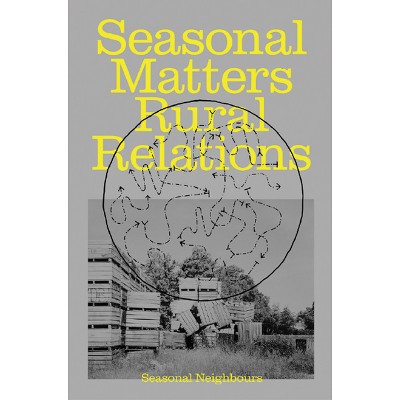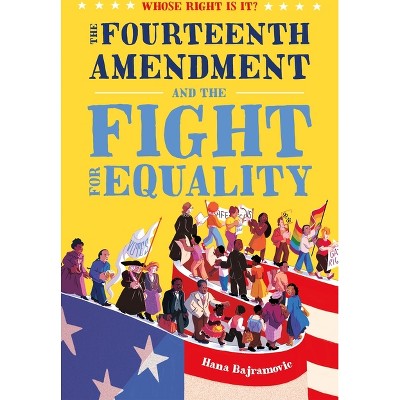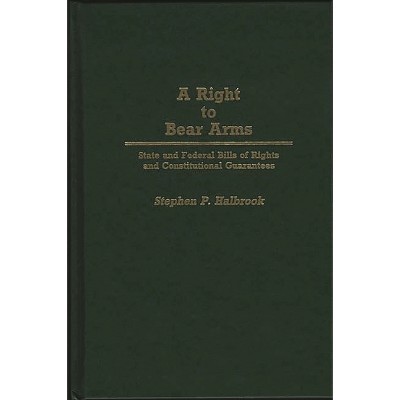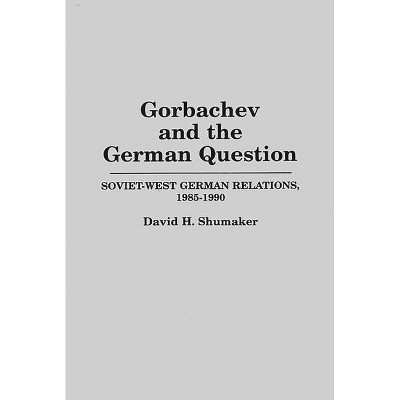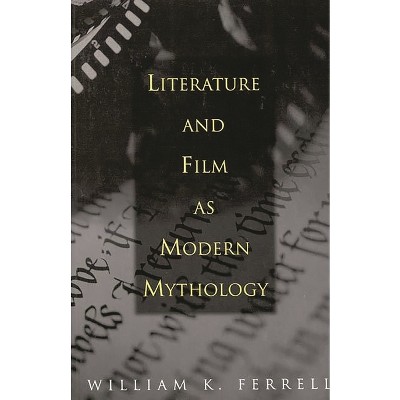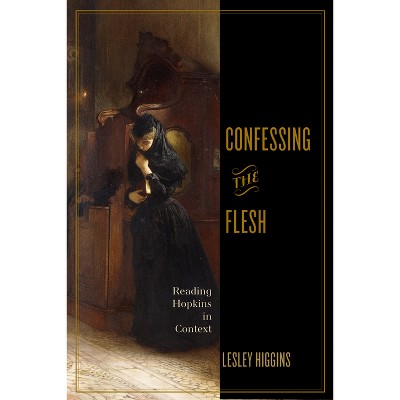Sponsored

Freedmen, the Fourteenth Amendment, and the Right to Bear Arms, 1866-1876 - (Literature) by Stephen P Halbrook (Hardcover)
In Stock
Sponsored
About this item
Highlights
- Whether newly-freed slaves could be trusted to own firearms was in great dispute in 1866, and the ramifications of this issue reverberate in today's gun-control debate.
- About the Author: STEPHEN P. HALBROOK practices law in Fairfax, Virginia.
- 248 Pages
- History, United States
- Series Name: Literature
Description
About the Book
Whether newly-freed slaves could be trusted to own firearms was in great dispute in 1866, and the ramifications of this issue reverberate in today's gun-control debate. This is the only comprehensive study ever published on the intent of the framers of the Fourteenth Amendment and of Reconstruction-era civil rights legislation to protect the right to keep and bear arms. Indeed, this is the most detailed study ever published about the intent of the Fourteenth Amendment to incorporate and to protect from state violation any of the rights guaranteed by the Bill of Rights, even including free speech. Paradoxically, the Second Amendment is virtually the only Bill of Rights guarantee not recognized by the federal courts as protected by the Fourteenth Amendment.
Through legislative and historical records generated during the Reconstruction epoch (1866-1876), Halbrook shows the intent of the Fourteenth Amendment and of civil rights legislation to guarantee full and equal rights to blacks, including the right to keep and bear arms.
Book Synopsis
Whether newly-freed slaves could be trusted to own firearms was in great dispute in 1866, and the ramifications of this issue reverberate in today's gun-control debate. This is the only comprehensive study ever published on the intent of the framers of the Fourteenth Amendment and of Reconstruction-era civil rights legislation to protect the right to keep and bear arms. Indeed, this is the most detailed study ever published about the intent of the Fourteenth Amendment to incorporate and to protect from state violation any of the rights guaranteed by the Bill of Rights, even including free speech. Paradoxically, the Second Amendment is virtually the only Bill of Rights guarantee not recognized by the federal courts as protected by the Fourteenth Amendment.
Through legislative and historical records generated during the Reconstruction epoch (1866-1876), Halbrook shows the intent of the Fourteenth Amendment and of civil rights legislation to guarantee full and equal rights to blacks, including the right to keep and bear arms.Review Quotes
"A masterful, thoroughly researched analysis. Halbrook has made a major contribution to our understanding of Reconstruction, of the Fourteenth Amendment, and of the connection between the Second Amendment and other human rights."-David B. Kopel, Adjunct Professor of Law New York University Law School
"Halbrook's examination of the importance of the right to arms to the former slaves and the Reconstruction era Congress that sought to protect them tells an important and all to often neglected story in the history of the right to arms and the history of Americans of African descent."-Robert J. Cottrol, Professor of Law and History George Washington University
"Stephen Halbrook has been on the cutting edge of Second Amendment research for several years now. His latest work establishes that the right to keep and bear arms is also shielded by the Fourteenth Amendment. Scholars will continue to debate the point, but Halbrook has effectively shifted the burden of proof to his critics. That's no small accomplishment."-Roger Pilon, Senior Fellow and Director Center for Constitutional Studies, Cato Institute
"Those who would limit the right to keep and bear arms to members of state militias have never come to grips with the intentions of the framers of the Fourteenth Amendment to protect blacks and unionists from southern militias (and others) by enforcing their personal right to arms. Stephen Halbrook presents a brief on behalf of this forgotten history--a history that no serious student of the Constitution can ignore."-Randy E. Barnett, Austin B. Fletcher Professor Boston University School of Law
.,."this book is a valuable addition to the literature."-Constitutional Commentary
"Halbrook assuredly achieves his goal. He provides overwhelming evidence that the Fourteenth Amendment was meant to protect the right of individuals to be armed and that this particular right was a major concern of its framers. He offers scholars in the field a wealth of quotations from the historical debates. He includes an interesting account of southern conventions, and an excellent account of the events leading up to the landmark Cruickshank case....[H]albrook helps restore the historical record of a badly served constitutional amendment."-American Historical Review
?...this book is a valuable addition to the literature.?-Constitutional Commentary
?[A] work of very considerable value. Thoroughly researched, the study rests on a more exacting examination of the relevant source material than any other study of the public record of the Joint Committee of Fifteen.?-Choice
?Halbrook assuredly achieves his goal. He provides overwhelming evidence that the Fourteenth Amendment was meant to protect the right of individuals to be armed and that this particular right was a major concern of its framers. He offers scholars in the field a wealth of quotations from the historical debates. He includes an interesting account of southern conventions, and an excellent account of the events leading up to the landmark Cruickshank case....[H]albrook helps restore the historical record of a badly served constitutional amendment.?-American Historical Review
?His tightly focused argument is novel and powerful enough to impress even a highly skeptical reader....Halbrook's critique of the judicial performance is biting and strong.?-The Law and Politics Book Review
?There have been many treatises written on the Fourteenth Amendment and the history of its development and interpretation, but this one is, in many ways, the most complete and comprehensive to date, covering many aspects that others have neglected, and providing its historical background and development, how its wording was drafted, and how its framers understood it....Hallbrook provides convincing evidence that the firearms which persons had the right to keep and bear were the latest firearms available, that the right was individual, intended to provide protection against abuse by government officials and their agents as well as against criminal attack, and that neither federal or state governments had the power to prohibit or disband militias, even if they were not state-sanctioned.... This treatise is a major contribution to legal history and commentary, and should be read by everyone having an interest in civil rights or firearms rights.?-H-Net Reviews
?This book is valuable to attorneys who labor to understand the background of the Cruikshank case, which is known for the Supreme Court's peculiar opinion that certain rights granted by the federal government are fundamental--and protected--and natural rights are not...military leaders should read this book.?-Military Review
"ÝA¨ work of very considerable value. Thoroughly researched, the study rests on a more exacting examination of the relevant source material than any other study of the public record of the Joint Committee of Fifteen."-Choice
..."this book is a valuable addition to the literature."-Constitutional Commentary
"[A] work of very considerable value. Thoroughly researched, the study rests on a more exacting examination of the relevant source material than any other study of the public record of the Joint Committee of Fifteen."-Choice
"His tightly focused argument is novel and powerful enough to impress even a highly skeptical reader....Halbrook's critique of the judicial performance is biting and strong."-The Law and Politics Book Review
"This book is valuable to attorneys who labor to understand the background of the Cruikshank case, which is known for the Supreme Court's peculiar opinion that certain rights granted by the federal government are fundamental--and protected--and natural rights are not...military leaders should read this book."-Military Review
"There have been many treatises written on the Fourteenth Amendment and the history of its development and interpretation, but this one is, in many ways, the most complete and comprehensive to date, covering many aspects that others have neglected, and providing its historical background and development, how its wording was drafted, and how its framers understood it....Hallbrook provides convincing evidence that the firearms which persons had the right to keep and bear were the latest firearms available, that the right was individual, intended to provide protection against abuse by government officials and their agents as well as against criminal attack, and that neither federal or state governments had the power to prohibit or disband militias, even if they were not state-sanctioned.... This treatise is a major contribution to legal history and commentary, and should be read by everyone having an interest in civil rights or firearms rights."-H-Net Reviews
About the Author
STEPHEN P. HALBROOK practices law in Fairfax, Virginia. Cases he argued in the U.S. Supreme Court include Printz v. United States (1997). His books include That Every Man Be Armed, Firearms Law Deskbook, and Target Switzerland.Shipping details
Return details
Trending Non-Fiction







